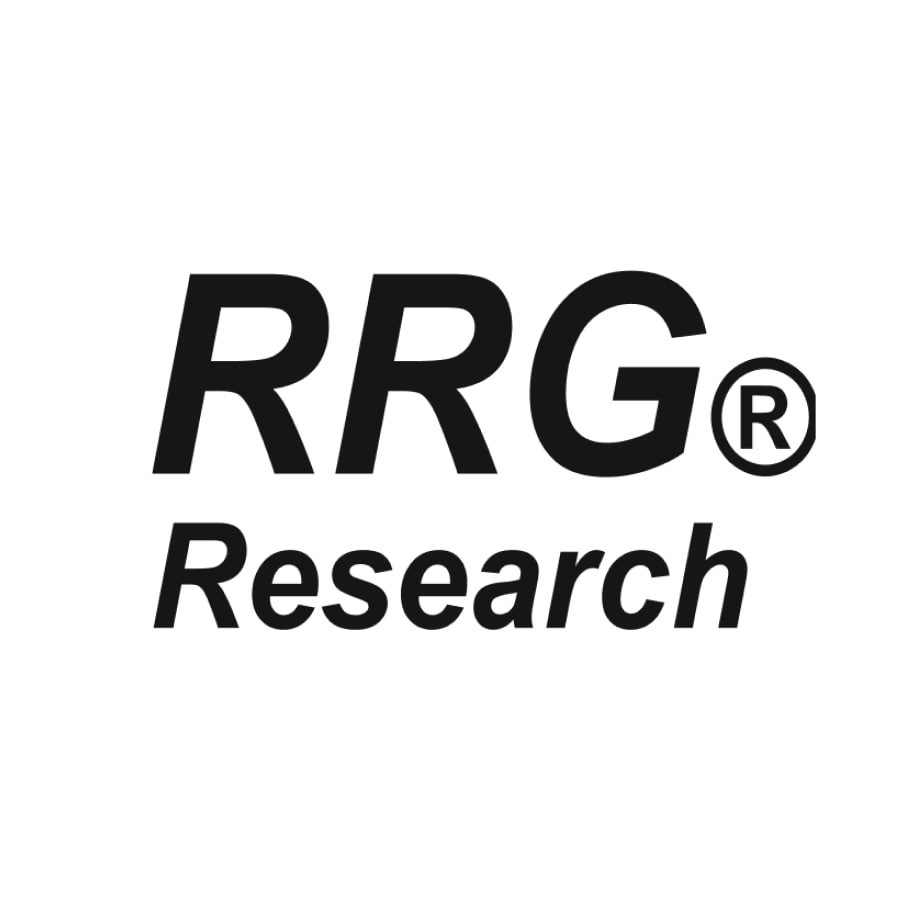Markets on the up
The Relative Rotation Graph (RRG) below shows the price performance of international stock market indices against a 0% return. Most indices are in the leading quadrant, indicating that stocks are in a short-term uptrend in terms of price. That’s good news for many traders as we emerge from the recent bear market. Again, as we saw last week, the outlier is Hong Kong’s Hang Seng Index [HSI], which continues to lag the main pack.
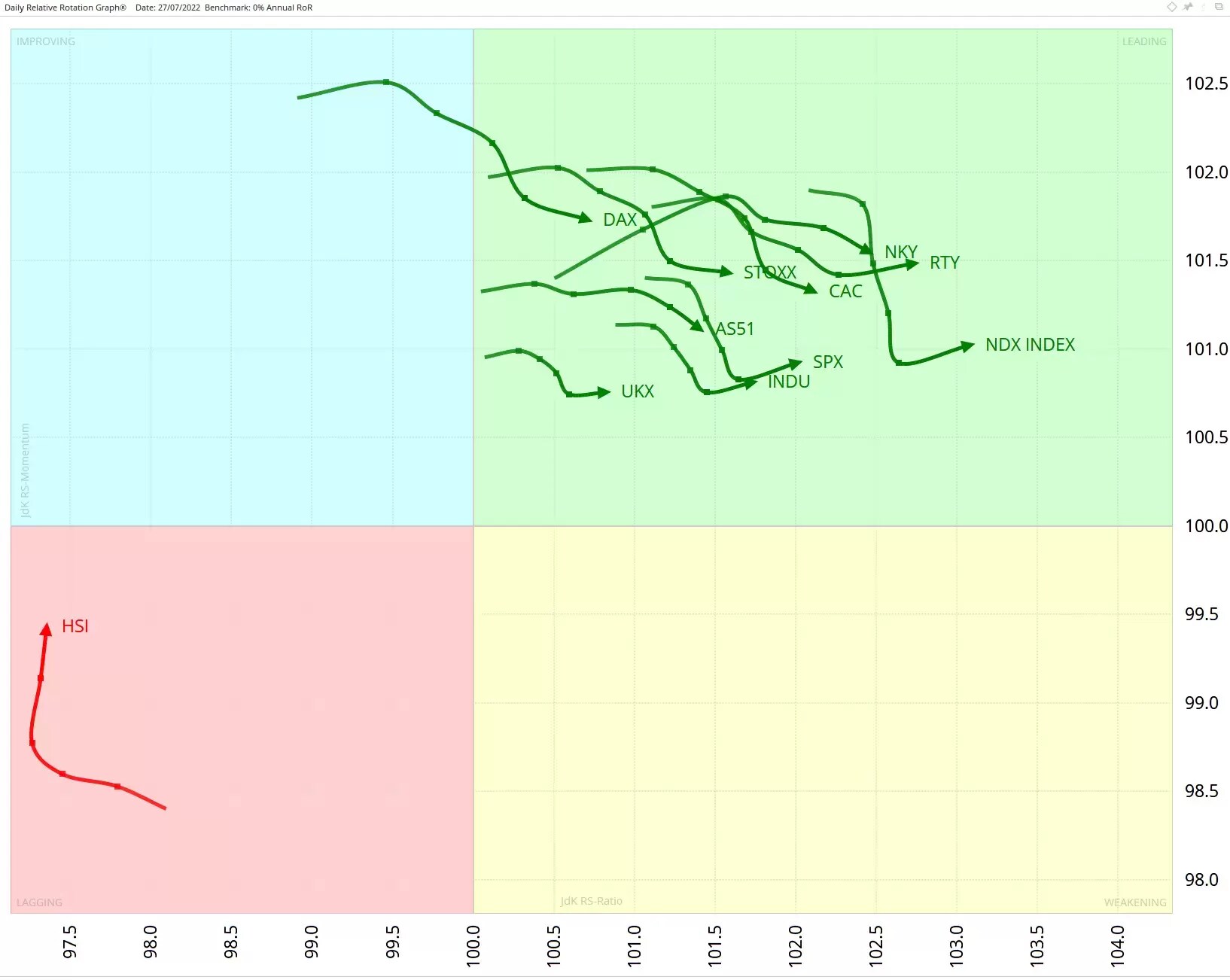
Stoxx 50 rebounding
As we outlined last week, the Eurozone’s Stoxx 50 Index appears to have greater relative upside potential than the S&P 500 at the moment.
The chart below shows that the Stoxx 50 [SX5E] has bottomed at around 3,400 several times in the last few months, indicating that support is strong there. This week the price broke above resistance at 3,600. This frees up upside potential, possibly giving the index room to target the 3,800 area. The short and sharp fall from 3,800 to 3,600 in June suggests that there should be little resistance on the way up.
More critical are the RRG lines at the bottom of the chart, which are moving higher. This movement is driving the tail for SX5E, as seen in the RRG near the top of this article, in to the leading quadrant, highlighting the current relative strength of the European market.
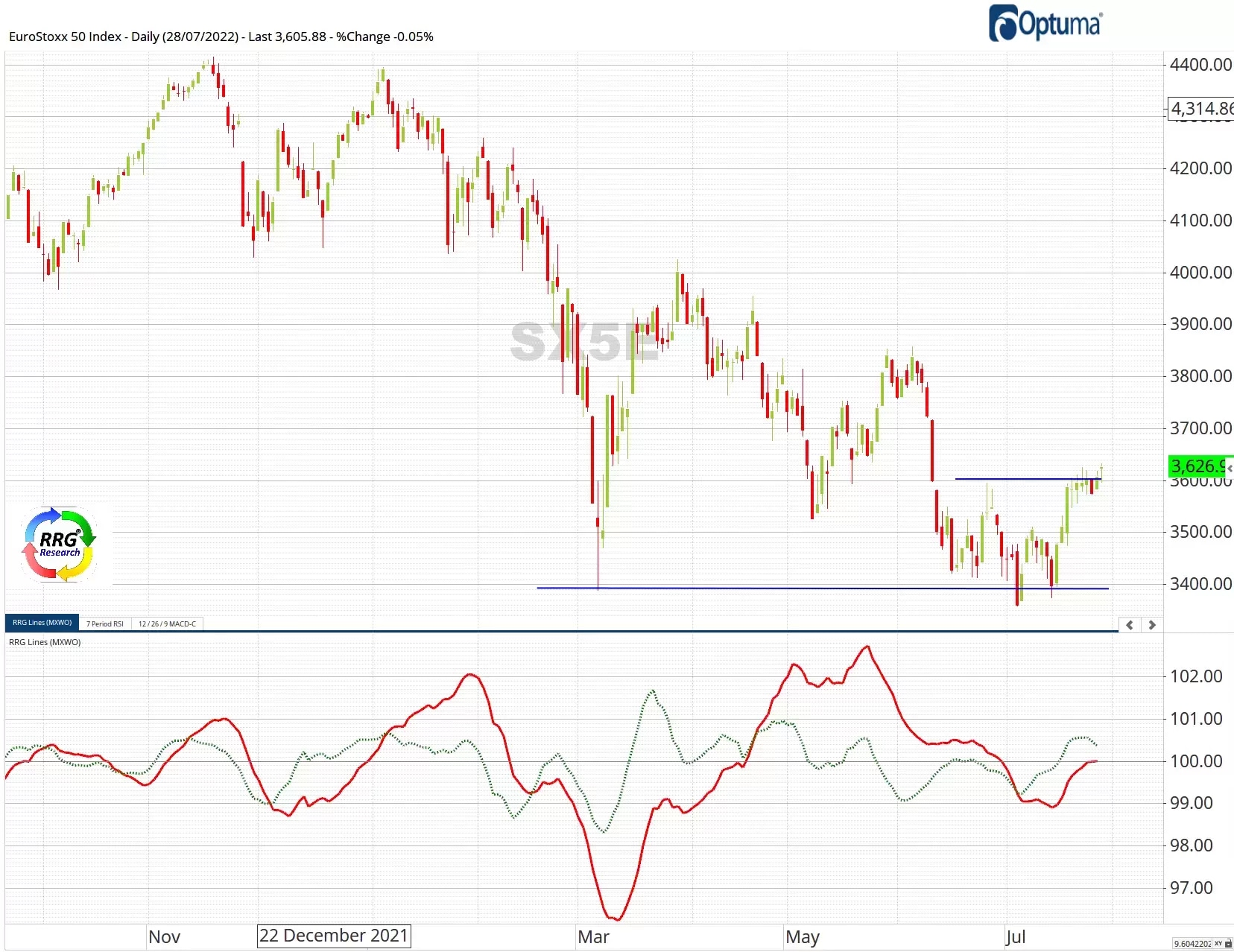
Nasdaq advance puts index back on our radar
The tech-heavy Nasdaq 100 [NDX] has the highest JdK RS-Ratio, a measure of relative strength, in the above RRG. Furthermore, its position against the JdK RS-Momentum axis points to increased momentum of the relative trend.
Looking at the daily bar chart, below, we see the Nasdaq is approaching two significant levels. The first resistance level is the high of around 12,800 that was reached in early June, following the big drop from the April peak. There is some consolidation resistance between that level and the current position. Second, at around 13,000, we find the former support level from the February and March lows. These old support levels are now resistance levels. Crucially, from a psychological perspective, 13,000 also represents round-number resistance.
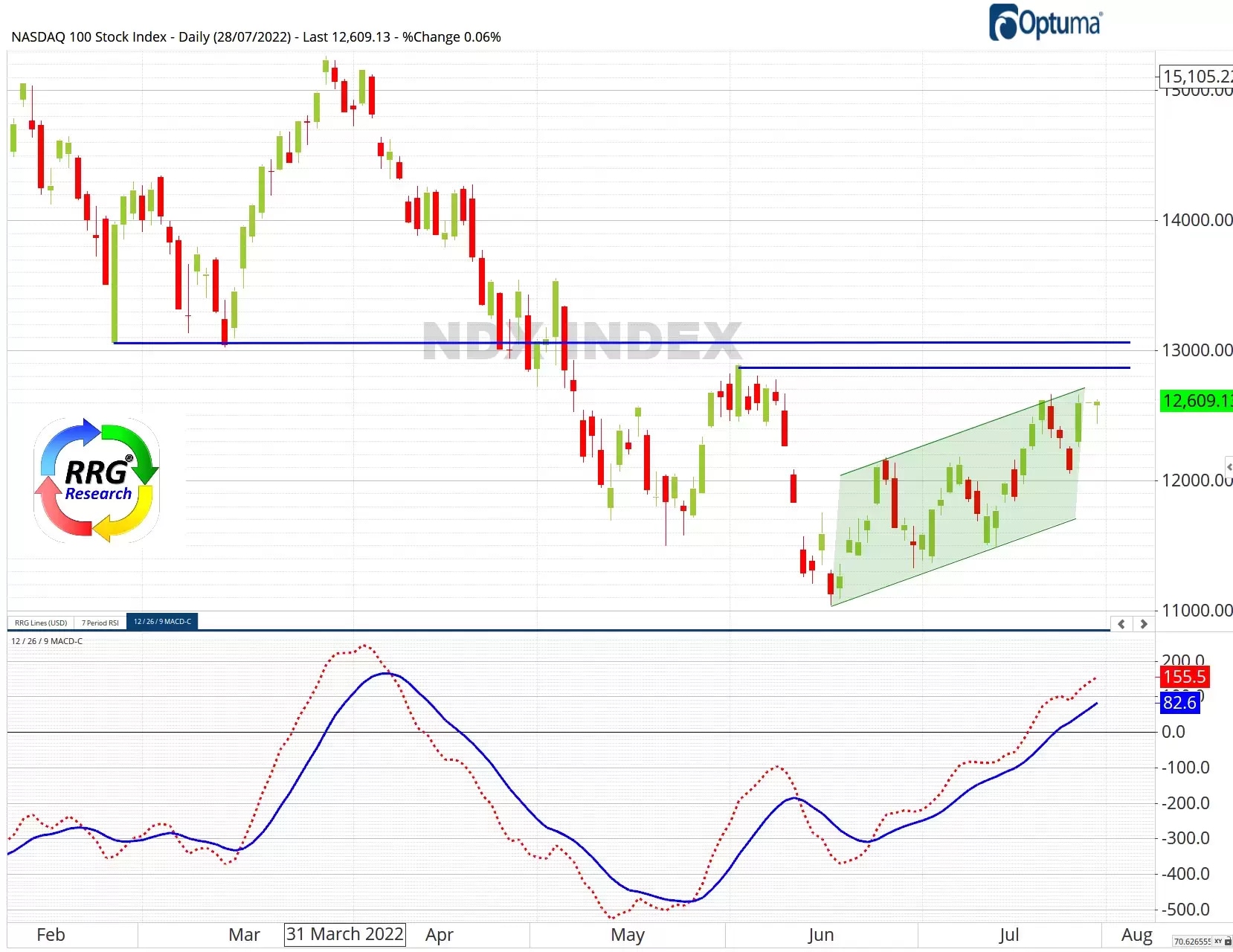
Observing the Nasdaq’s approach to these resistance levels, we see the rising channel since the June low. We can also see that the moving average convergence divergence (MACD) has been bullish since June, and the gap between the MACD and its signal line is increasing, indicating that the advance is gaining momentum. This is exactly what we want to see from an attack on resistance levels.
Time to stop hating tech stocks?
We used to call the leading group of US tech stocks FAANGs, after the initials of Facebook, Apple, Amazon, Netflix and Google. They were the powerhouse behind the long bull run in US equities. But in this year’s tech sell-off, in which the Nasdaq has fallen more than 22% year to date they led the market down, perhaps proving that what goes up must come down – eventually.
The RRG below shows the performance of an expanded group of leading tech stocks, using the S&P 500 as a benchmark. The arrowheads for Netflix [NFLX], Meta Platforms [FB in our charts, though the company’s official stock ticker is now META], Nvidia [NVDA] and Apple [AAPL] are all in the improving quadrant. Alibaba [BABA] is in the leading quadrant, while Twitter [TWTR] is relatively strong too.
In contrast, Google parent company Alphabet [GOOGL] is heading deeper in to the lagging quadrant, with Amazon [AMZN] even further to the left. To sum up, the chart neatly illustrates each stock’s direction of travel, informing our understanding of which companies are driving the technology rebound.
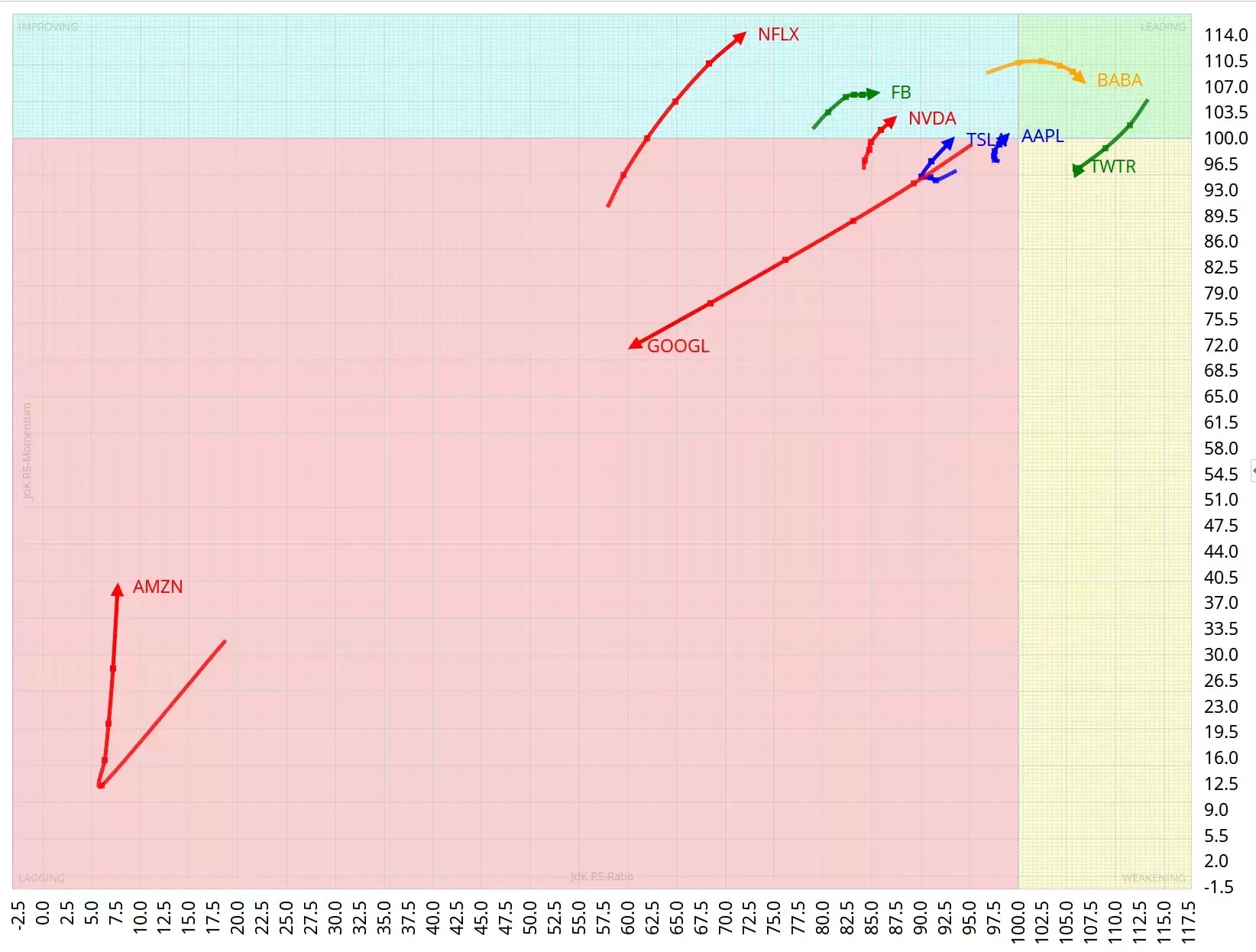
Pricing is indicative. Past performance is not a reliable indicator of future results. RRG’s views and findings are their own and should not be relied upon as the basis of a trading or investment decision.

